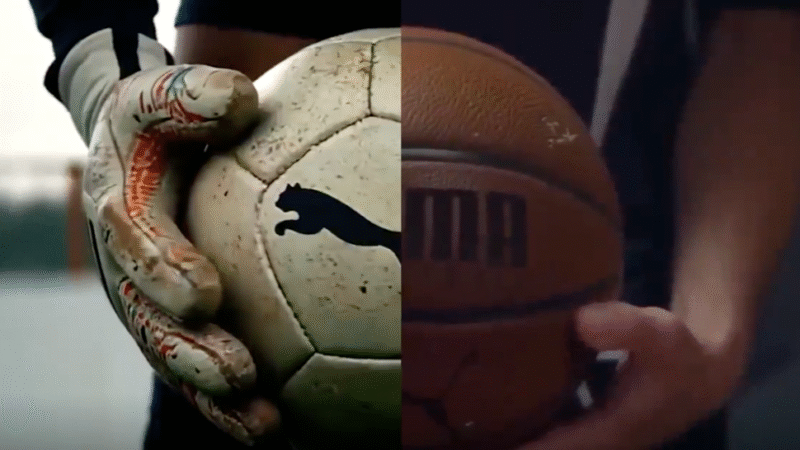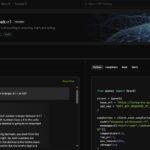Click here to buy secure, speedy, and reliable Web hosting, Cloud hosting, Agency hosting, VPS hosting, Website builder, Business email, Reach email marketing at 20% discount from our Gold Partner Hostinger You can also read 12 Top Reasons to Choose Hostinger’s Best Web Hosting
The advertising world has long grappled with the tension between speed, cost, and creative quality. Traditional campaigns typically stretch over months, demanding budget-heavy shoots and multiple review cycles. That dynamic often leaves brands racing the clock and struggling to keep pace with rapid market shifts. Enter the puma and ai agent ad—a fully AI‑generated 30‑second spot crafted in just five weeks by Monks, NVIDIA, and Meta agents. From concept ideation to scriptwriting, video synthesis to final edit, this AI‑generated commercial leverages an agentic AI workflow to tackle the perennial pain point: deliver high‑impact generative AI advertising faster and more affordably.
How To Create Breathtaking AI Images: A Guide to Art Terminology
“How to Create Breathtaking AI Images: A Guide to Art Terminology” is a comprehensive guide to using artificial intelligence (AI) to create visually stunning art. The book covers a wide range of topics, including color theory, lighting, and texture, as well as the different mediums and techniques used by artists. It also explores the various styles and genres of art, from classical to contemporary, and how to use them to create unique and expressive works. With clear explanations and plenty of prompt engineering examples, this booklet is an invaluable resource for anyone looking to improve their artistic skills and knowledge. Whether you are a beginner or an experienced artist, this book will inspire and enhance your creative journey.
A New Paradigm in Generative AI in Marketing
Rather than building in isolated stages with human hand‑offs, Puma’s latest spot used an end‑to‑end AI pipeline:
Concept Ideation: Meta’s Llama–powered agents synthesized brand guidelines and past campaign data to propose multiple narrative briefs in minutes.
Scriptwriting: Language models drafted cohesive scripts optimized for tone, pacing, and keyword relevance, reducing writer hours.
AI Video Production: NVIDIA’s Cosmo generated dynamic athlete and product footage, while Runway and Flux created high‑resolution stills for social cards.
Automated Editing & Post‑Production: Monks. Flow orchestrated cuts, transitions, color grading, and sound design via AI‑driven plugins—accelerating what normally takes weeks.

This agentic AI workflow not only delivered the final ad in a fraction of the typical three‑ to six‑month timeline but also demonstrated how generative AI in marketing can scale creativity at unprecedented speed.
In this step-by-step tutorial, you’ll learn how this AI agent replaces an $82k/yr graphic designer using N8N and OpenAI, transforming tedious design work into an automated workflow you can embed on any website or sell as a service.
Balancing Speed with Quality and Trust
While rapid turnaround is compelling, readers often wonder: Does faster mean lower quality? In Puma’s case, the ad achieved a polished look, yet a few AI artifacts—like extra fingers or slightly off motion—signal areas where human review remains vital. Maintaining brand trust requires transparency, and Puma rightly labeled this project as an “R&D” experiment on its social channels. Such openness sets a standard for ethical AI marketing, assuring audiences that innovation need not sacrifice authenticity.
Why This Matters for Marketers
Cost Efficiency: Automating routine tasks cuts down on agency fees and production budgets, freeing funds for strategy and distribution.
Agile Iterations: Brands can test multiple creative angles swiftly, using data‑driven feedback loops to refine messages in near real time.
Personalization at Scale: Agentic AI agents can generate regional or demographic variants of an ad—with language tweaks and localized visuals—without rebuilding from scratch.
Skill Evolution: Marketing teams will shift from manual editing to prompt engineering and model fine‑tuning, fostering a new skill set centered on AI orchestration.
By embracing an agentic AI workflow, organizations position themselves to respond instantly to trending topics, seasonal events, or competitive moves—an advantage increasingly evergreen in a digital‑first marketplace.
Under the Hood: Monks Foundry and NVIDIA Cosmo
The Monks Foundry, backed by S4 Capital’s Monks and a growing roster of certified engineers, represents a specialized hub for deploying enterprise‑grade AI models. With support from NVIDIA Cosmo—a video‑generation engine that harnesses GPU acceleration—teams can produce hyper‑realistic content without waiting on live shoots or location shoots. At GTC 2025, Monks demonstrated how Omniverse and NIM microservices boosted their pipeline throughput by nearly 3×.
This collaboration sets a template for other brands—be they luxury fashion houses, automotive leaders, or consumer‑goods giants—to integrate AI video production into their core marketing operations.
A Versatile Future: Beyond the Puma Use Case
Though Puma’s project is headline‑grabbing, its implications stretch far wider:
Retail & Ecommerce: Imagine automated product‑demo videos tailored to individual browsing history.
Entertainment & Media: Film studios could spin up teaser trailers at scale, testing different hooks for distinct audience segments.
B2B & Tech: Software vendors might generate personalized walk‑through videos highlighting features most relevant to each prospect.
As generative AI models mature, the barrier between concept and final cut continues to erode, ushering in an era where creativity is limited only by prompt design and strategic vision.
Generate brand-new images from descriptive prompts. Whether you need concept art, marketing visuals, or educational diagrams, GPT-image-1 delivers high-quality results at speed.
Key Takeaways
Revolutionary Speed: Puma’s AI‑generated ad launched in five weeks—2–3× faster than standard production cycles.
End‑to‑End Automation: From ideation to edit, an agentic AI workflow handled every step, showcasing the power of integrated AI systems.
Quality & Oversight: Minor AI artifacts highlight the ongoing need for human review to maintain brand standards.
Ethical Transparency: Clear labeling of AI involvement fosters audience trust and sets a best-practice benchmark.
Strategic Advantage: Brands adopting AI workflows can personalize, iterate, and scale content with unprecedented agility.
What Is Natural Language Processing? A Complete Guide to NLP
Conclusion
The puma and ai agent ad isn’t just another marketing stunt—it’s a proof point that agentic AI can redefine how ads are conceived, produced, and deployed. For marketing leaders looking to stay ahead, exploring AI‑driven pipelines is no longer optional—it’s imperative. To dive deeper into crafting your own AI‑powered campaigns, explore our AI Marketing Trends series, subscribe to our newsletter, and unlock the strategic frameworks that will shape advertising’s next chapter.
Now loading...






